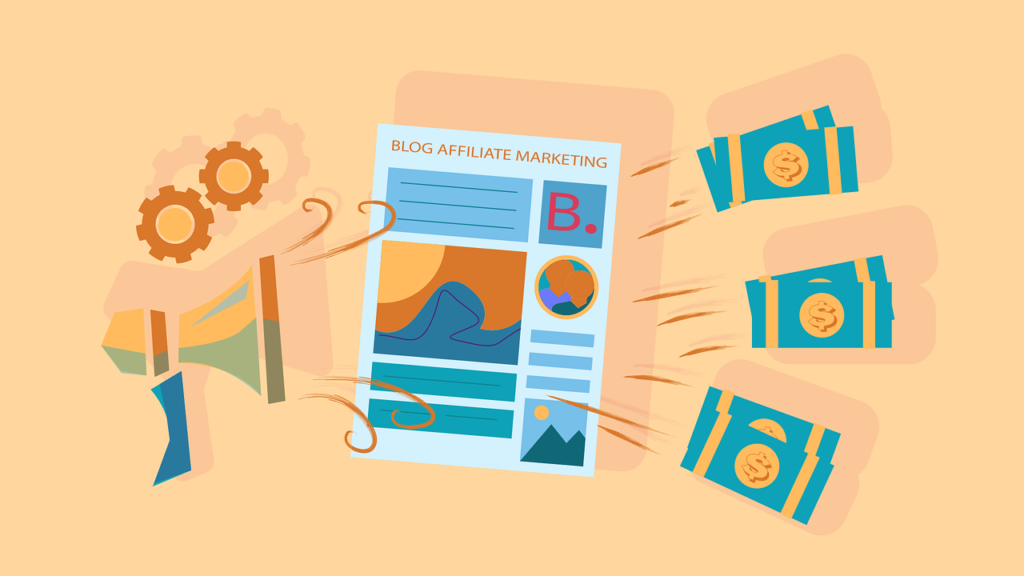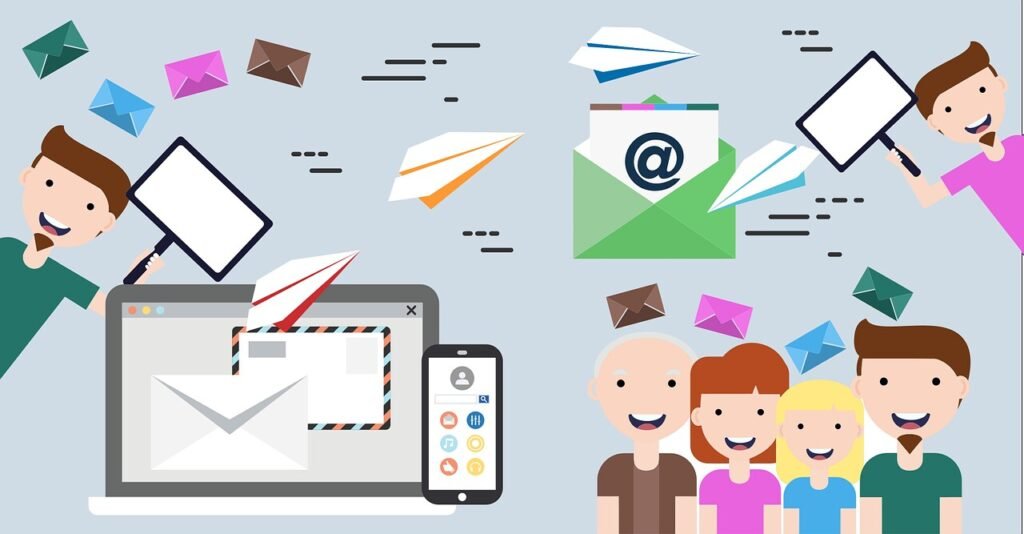- 1. Why Are 90% of Purchasing Decisions Made Subconsciously?
- 2. How Do Ads with Strong Emotional Responses Increase Sales by 23%?
- 3. Why Is Emotional Content Shared 2x More Than Non-Emotional Content?
- 4. Why Do Purely Emotional Campaigns Perform Better Than Rational Ones?
- 5. How Does an Emotional Connection Increase Spending by 2x?
- 6. Why Are 80% of Consumers More Likely to Remember Brands with Emotional Content?
- 7. How Can Emotional Marketing Increase Brand Awareness by 21%?
- 8. Why Do 95% of Purchasing Decisions Have Emotional Influences?
- 9. How Do Ads with Emotional Appeal Achieve a 31% Higher Response Rate?
- 10. Why Do 76% of Consumers Prefer Brands They Feel Emotionally Connected To?
- 11. How Can Emotional Connections Increase Customer Lifetime Value by 306%?
- 12. Why Do Brands Using Emotional Marketing See a 17% Increase in Engagement?
- 13. Why Do 87% of Customers Purchase Based on Emotional Response?
- 14. How Can Emotional Marketing Increase Customer Loyalty by 44%?
- 15. Why Are Video Ads with Emotional Content 10x More Likely to Be Shared?
- 16. Why Do 92% of Consumers Want Brands to Make Ads That Feel Like a Story?
- 17. How Does Emotional Marketing Increase Conversion Likelihood by 70%?
- 18. Why Do 65% of Consumers Recommend Brands They Feel Emotionally Connected To?
- 19. How Do Brands with Emotional Connections See a 15% Increase in Customer Retention Rates?
- 20. Why Are Ads Evoking Happiness Shared 34% More Often?
- 21. How Can Emotional Marketing Drive a 25% Increase in Sales?
- 22. Why Do 81% of Millennials Expect Brands to Create Positive Social Impact?
- 23. How Does Emotional Content in Social Videos Influence 64% of Consumers to Make a Purchase?
- 24. How Can Emotional Ads Improve Brand Favorability by 44%?
- 25. Why Do 77% of Consumers Buy from Brands They Share Values With?
- 26. How Does Emotion Influence 66% of Customers’ Purchase Decisions?
- 27. Why Are 58% of Consumers Willing to Pay More for Brands Creating Positive Emotional Experiences?
- 28. How Can Emotional Storytelling Increase Purchase Intent by 12%?
- 29. Why Do Emotional Campaigns Have a 50% Higher ROI Compared to Rational Campaigns?
- 30. How Do 83% of Marketers View the Impact of Emotional Marketing on Their Campaigns?
- Conclusion
- We got all the latest Marketing Stats here:
In the ever-evolving landscape of digital marketing, the ability to connect with your audience on an emotional level has become more critical than ever. Emotional marketing isn’t just a buzzword; it’s a powerful tool that can drive customer loyalty, increase sales, and enhance brand awareness. As we step into 2024, understanding the impact of emotional marketing is essential for any marketer aiming to stay ahead of the curve. This article delves into the key statistics that highlight the power of emotional marketing, providing actionable insights to help you harness this strategy effectively.
1. Why Are 90% of Purchasing Decisions Made Subconsciously?

When consumers make purchases, 90% of their decisions are driven by subconscious factors. This statistic underscores the importance of tapping into emotions rather than solely focusing on logical appeals.
The subconscious mind processes information rapidly, and emotions play a crucial role in shaping these instant decisions. By creating emotionally resonant content, marketers can influence these subconscious choices, steering customers towards their products.
2. How Do Ads with Strong Emotional Responses Increase Sales by 23%?
Ads that evoke strong emotional responses can lead to a 23% increase in sales compared to those with rational content. Emotional connections create memorable experiences that resonate with consumers, making them more likely to act. Whether it’s joy, surprise, or even sadness, ads that make people feel something are more effective at driving sales. This is because emotions can create a lasting bond between the consumer and the brand.
3. Why Is Emotional Content Shared 2x More Than Non-Emotional Content?
Emotional content is shared twice as much as non-emotional content because it resonates on a personal level. When people experience strong emotions, they are more likely to share that experience with others. This sharing amplifies the reach of your marketing efforts, making your content more visible and impactful. Leveraging emotions like happiness, awe, or inspiration can turn your audience into brand advocates who help spread your message organically.
4. Why Do Purely Emotional Campaigns Perform Better Than Rational Ones?
Campaigns with purely emotional content perform about twice as well as those with only rational content. This is because emotions drive human behavior more powerfully than logic. While rational arguments appeal to the intellect, emotional appeals connect with the heart, creating a more profound impact. This connection fosters brand loyalty and encourages repeat purchases, as consumers are more likely to remember and favor brands that made them feel something.
5. How Does an Emotional Connection Increase Spending by 2x?
Consumers who experience an emotional connection with a brand are likely to spend twice as much. Emotional connections create a sense of loyalty and trust, encouraging customers to invest more in brands they feel connected to. This can be achieved through storytelling, personalized experiences, and consistent emotional engagement across all touchpoints. By focusing on building these connections, brands can significantly increase their average customer spend.
6. Why Are 80% of Consumers More Likely to Remember Brands with Emotional Content?
Brands that engage consumers emotionally are 80% more likely to be remembered. Memory is closely tied to emotions, and experiences that evoke strong feelings are more likely to be retained. This means that emotional marketing not only drives immediate actions but also creates lasting impressions that keep your brand top-of-mind. Using storytelling and evocative imagery can help make your brand unforgettable.
7. How Can Emotional Marketing Increase Brand Awareness by 21%?
Emotional marketing campaigns can increase brand awareness by 21%. When consumers feel an emotional connection to a brand, they are more likely to talk about it, share it, and recommend it to others. This word-of-mouth effect boosts brand visibility and awareness. Creating content that evokes strong emotions ensures that your brand stays relevant and top-of-mind for a broader audience.
8. Why Do 95% of Purchasing Decisions Have Emotional Influences?
Emotions influence 95% of purchasing decisions because they drive human behavior. Even when people think they are making logical decisions, emotions play a significant role in guiding their choices. This is why it’s crucial for marketers to understand and leverage emotional triggers. By appealing to emotions like happiness, fear, or desire, you can influence consumer behavior more effectively than through rational arguments alone.
9. How Do Ads with Emotional Appeal Achieve a 31% Higher Response Rate?
Ads that have an emotional appeal achieve a 31% higher response rate because they connect with people on a personal level. Emotional ads capture attention and create a sense of urgency or excitement that prompts action. Whether it’s a heartwarming story or a thrilling visual, emotionally charged ads are more likely to engage viewers and drive them to respond.
10. Why Do 76% of Consumers Prefer Brands They Feel Emotionally Connected To?

76% of consumers have a strong preference for brands they feel emotionally connected to. This preference is driven by the trust and loyalty that emotional connections foster. When consumers feel that a brand understands and resonates with their values and emotions, they are more likely to choose that brand over others. This highlights the importance of building genuine emotional connections with your audience.
11. How Can Emotional Connections Increase Customer Lifetime Value by 306%?
Emotional connections with brands can boost customer lifetime value by 306%. When customers feel a strong emotional bond with a brand, they are more likely to stay loyal and continue purchasing over time. This long-term loyalty translates into higher lifetime value, as emotionally connected customers not only buy more but also remain loyal even when competitors offer similar products. Brands can cultivate these connections through consistent, emotionally engaging interactions.
12. Why Do Brands Using Emotional Marketing See a 17% Increase in Engagement?
Brands that use emotional marketing experience a 17% increase in engagement. Emotional content captures attention and prompts interaction, whether through likes, comments, or shares. By tapping into emotions, brands can create more compelling and relatable content that encourages their audience to engage. This heightened engagement not only boosts brand visibility but also fosters a deeper connection with the audience.
13. Why Do 87% of Customers Purchase Based on Emotional Response?
87% of customers make purchases primarily based on emotional response. Emotional marketing taps into the feelings that drive purchasing decisions, such as excitement, trust, and happiness. When customers feel an emotional pull towards a product or brand, they are more likely to act on those feelings and make a purchase. This underscores the importance of creating marketing campaigns that resonate emotionally with your target audience.
14. How Can Emotional Marketing Increase Customer Loyalty by 44%?
Emotional marketing can boost customer loyalty by 44%. When brands engage with their customers on an emotional level, they create a sense of trust and attachment. This emotional bond encourages customers to remain loyal, even in the face of competitive offers. Loyalty programs, personalized experiences, and consistent emotional messaging can help brands strengthen these bonds and keep customers coming back.
15. Why Are Video Ads with Emotional Content 10x More Likely to Be Shared?
Video ads that evoke strong emotions are 10 times more likely to be shared. Emotional videos create a powerful connection with viewers, prompting them to share the content with their friends and family. This sharing amplifies the reach of the video, spreading the brand message far and wide. By focusing on emotional storytelling, brands can create viral content that resonates deeply with their audience.

16. Why Do 92% of Consumers Want Brands to Make Ads That Feel Like a Story?
92% of consumers prefer ads that feel like a story because stories engage emotions and create a memorable experience. Storytelling allows brands to connect with their audience on a deeper level, making the content more relatable and impactful. When consumers see themselves in a brand’s story, they are more likely to feel an emotional connection, leading to increased engagement and loyalty.
17. How Does Emotional Marketing Increase Conversion Likelihood by 70%?
Emotional marketing increases the likelihood of conversion by 70%. When consumers feel an emotional connection with a brand, they are more inclined to act, whether it’s making a purchase, signing up for a newsletter, or sharing content. Emotions like trust, excitement, and happiness drive these actions, making emotional marketing a powerful tool for boosting conversion rates.
18. Why Do 65% of Consumers Recommend Brands They Feel Emotionally Connected To?
65% of consumers recommend brands they feel emotionally connected to. Emotional connections create brand advocates who are eager to share their positive experiences with others. This word-of-mouth marketing is invaluable, as recommendations from trusted sources carry significant weight. By fostering emotional connections, brands can turn their customers into loyal advocates who help spread their message.
19. How Do Brands with Emotional Connections See a 15% Increase in Customer Retention Rates?
Brands with strong emotional connections see a 15% increase in customer retention rates. Emotional bonds create a sense of loyalty and commitment, encouraging customers to stay with a brand over time. Retaining customers is often more cost-effective than acquiring new ones, making emotional marketing a valuable strategy for maintaining a loyal customer base.
20. Why Are Ads Evoking Happiness Shared 34% More Often?

Ads that evoke happiness are shared 34% more often because positive emotions are contagious. When people feel happy, they want to share that feeling with others. Happy ads not only create a positive association with the brand but also encourage viewers to spread the joy by sharing the content. This increases the reach and impact of the ad, helping the brand connect with a broader audience.
21. How Can Emotional Marketing Drive a 25% Increase in Sales?
Emotional marketing can drive a 25% increase in sales compared to traditional campaigns. Emotional appeals create a deeper connection with consumers, making them more likely to trust and choose the brand. This connection translates into higher sales as consumers act on their emotions and make purchasing decisions. By focusing on emotional triggers, brands can enhance their sales performance and achieve better results.
22. Why Do 81% of Millennials Expect Brands to Create Positive Social Impact?
81% of millennials expect brands to go beyond generating profit and create positive social impact. Millennials are more likely to support brands that align with their values and contribute to social causes. This expectation drives emotional connections, as consumers feel good about supporting brands that make a difference. By engaging in social impact initiatives, brands can strengthen their emotional ties with millennial consumers.
23. How Does Emotional Content in Social Videos Influence 64% of Consumers to Make a Purchase?
Consumers are 64% more likely to make a purchase after watching a branded social video that evokes emotions. Emotional content in videos engages viewers and creates a memorable experience, making them more inclined to act. Videos that tell a compelling story or evoke strong feelings can drive viewers to purchase by creating a connection with the brand. This shows the power of video content in emotional marketing.
24. How Can Emotional Ads Improve Brand Favorability by 44%?
Emotional ads can improve brand favorability by 44%. When consumers encounter ads that resonate with their feelings, they develop a positive perception of the brand. This favorable view makes them more likely to choose the brand over competitors and remain loyal. Creating emotionally engaging ads helps brands build a positive image and strengthen their relationship with consumers.
25. Why Do 77% of Consumers Buy from Brands They Share Values With?
77% of consumers buy from brands they share values with because shared values create a strong emotional bond. When consumers see that a brand stands for the same things they do, they feel a sense of alignment and trust. This emotional connection drives purchasing decisions and fosters loyalty, as consumers prefer to support brands that reflect their beliefs and values.
26. How Does Emotion Influence 66% of Customers’ Purchase Decisions?

66% of customers say their purchase decisions are influenced by the emotion they feel towards a brand. Emotions play a crucial role in decision-making, often outweighing rational considerations. Brands that can evoke positive emotions such as joy, trust, or excitement can influence consumers to choose their products. This demonstrates the importance of creating emotionally charged marketing campaigns.
27. Why Are 58% of Consumers Willing to Pay More for Brands Creating Positive Emotional Experiences?
58% of consumers are willing to pay more for brands that create positive emotional experiences. Positive emotions enhance the perceived value of a brand, making consumers feel that the higher price is justified. By focusing on delivering exceptional emotional experiences, brands can command premium prices and foster customer loyalty, as consumers are willing to invest more in brands that make them feel good.
28. How Can Emotional Storytelling Increase Purchase Intent by 12%?
Emotional storytelling can lead to a 12% increase in purchase intent. Stories that evoke emotions create a deeper connection with consumers, making them more likely to consider purchasing. By weaving emotions into their narratives, brands can make their products more appealing and relatable. This increased purchase intent highlights the power of storytelling in emotional marketing.
29. Why Do Emotional Campaigns Have a 50% Higher ROI Compared to Rational Campaigns?
Emotional campaigns have a 50% higher ROI compared to rational campaigns because they create stronger connections with consumers. Emotional appeals drive engagement, loyalty, and sales more effectively than logical arguments alone. By investing in emotional marketing, brands can achieve better returns on their marketing spend, as emotionally engaged consumers are more likely to act and remain loyal.
30. How Do 83% of Marketers View the Impact of Emotional Marketing on Their Campaigns?
83% of marketers say emotional marketing has a significant positive impact on their campaigns. Marketers recognize that tapping into emotions can enhance engagement, drive sales, and build lasting relationships with consumers. By prioritizing emotional marketing, brands can create more impactful and successful campaigns that resonate deeply with their target audience.
Conclusion
Emotional marketing is a powerful tool that can drive significant results for brands in 2024. By understanding and leveraging the key statistics highlighted in this article, marketers can create more engaging, relatable, and effective campaigns. Emotional connections foster loyalty, increase customer lifetime value, and enhance brand awareness, making emotional marketing an essential strategy for success in the digital age. As you plan your marketing efforts for the coming year, remember to prioritize emotional engagement to build stronger relationships with your audience and achieve your business goals.
We got all the latest Marketing Stats here:
Read next:
- Best Accounting Software for Small Businesses: A Comprehensive Review
- How Game-Changing is the Digital Rupee going to be?
- Agile CRM Review: How Good is It (in 2023)?
- Recent Trends in Mergers and Acquisitions in the US (2023)
- 11 Best Contract Management Software for You in 2023




















Comments are closed.